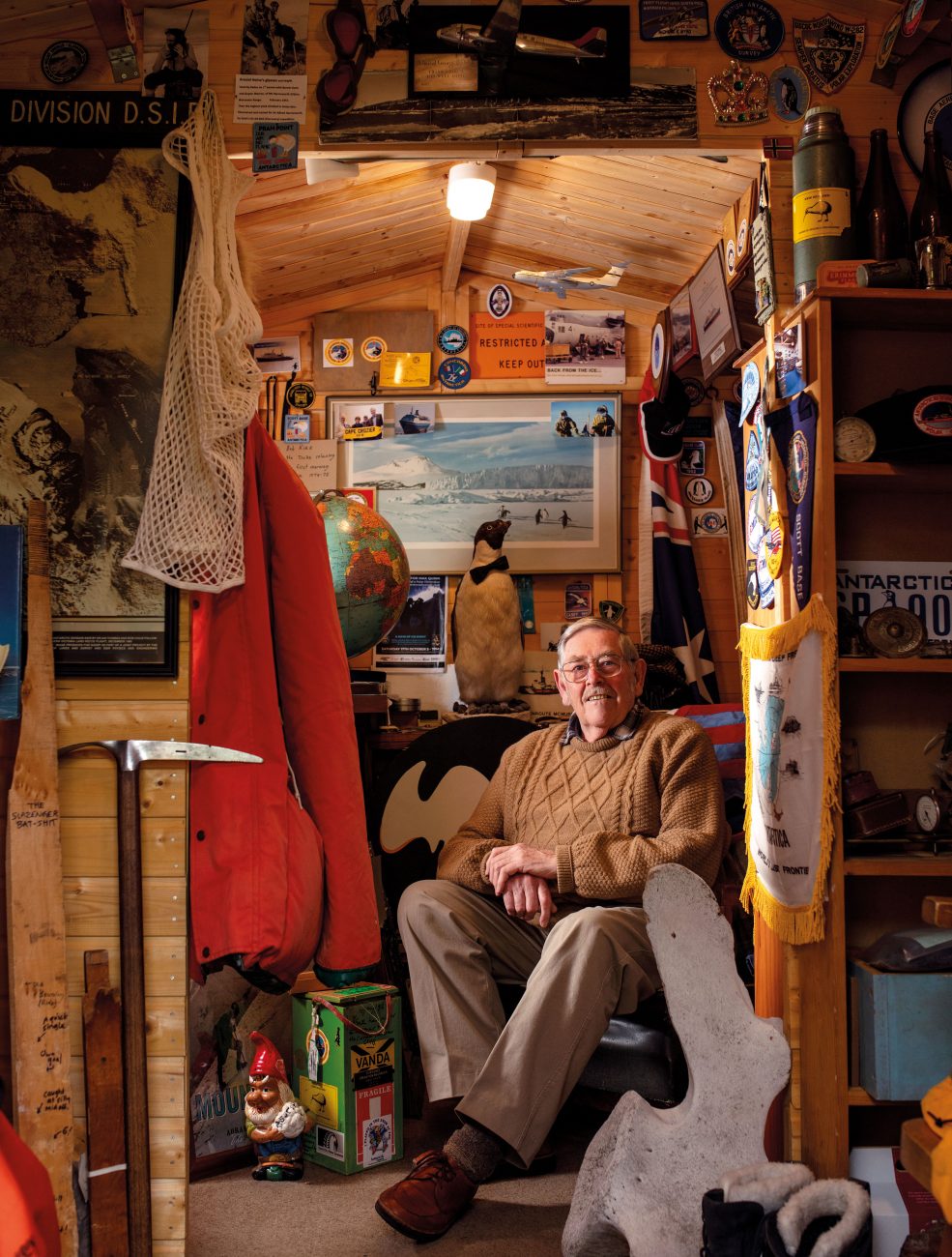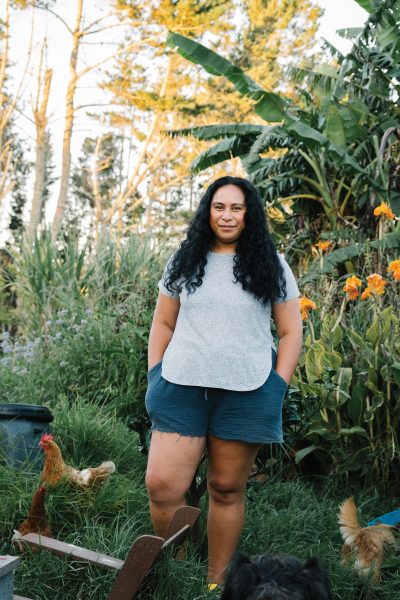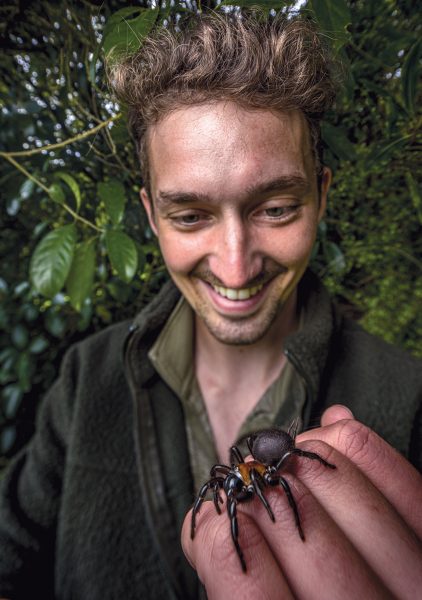The ice man
Antarctic historian David Harrowfield has spent a lifetime collecting—objects, friendships and memories.

David Harrowfield was seven years old and living in Ōamaru when he came across the oak tree in the middle of the street. It was ringed in an iron fence. A plaque read: “In memory of the Antarctic heroes Scott, Wilson, Bowers, Oates, Evans, who reached the pole on January 17th 1912, and perished on the return journey.” The boy’s interest was piqued. When his grandfather gave him a book about the Antarctic explorer Sir Robert Falcon Scott, he was hooked. At night, he’d listen for the rumbling of Globemaster aircraft flying south to Antarctica.
Now, aged 82, Harrowfield’s passion for the ice is stronger than ever. He’s collected hundreds of Antarctic artefacts, written several books recounting Antarctic history, and earned a New Zealand Antarctic Medal for his service to the great south. There’s even a Harrowfield Hill on Inexpressible Island, where Scott’s northern party survived more than 200 days in a snow cave during the winter of 1912. (Harrowfield has said the hill is “something nice” for his two adult sons and his grandchildren, who live in Boston and Singapore. But “it’s a bugger of a thing to walk up”.)
But like most Antarctic journeys, Harrowfield’s route south wasn’t an easy one. At 18, he moved to Christchurch with his family, and his father told him he had to find work. So instead of studying archaeology at university as he’d planned, Harrowfield spent the next 10 years moving from job to job—post office teller to Foodstuffs buyer—and started a family. But all the while, he thought about Antarctica. He would cycle from his Spreydon home to the airport—even in the middle of the night—to watch the Antarctic planes land.
Harrowfield’s big break into the world of science came in 1970, when he answered a job ad for the position of field and laboratory technician at the Department of Geography, University of Canterbury. He got it, despite not having a university degree. “I loved it,” Harrowfield says. “Being in nature with the birds and the insects and the plants. I was in the mountains and on fishing boats and on beaches.” His job also involved analysing sand and pebble samples from Antarctica, collected by a master’s student named Warren Farrelly. It was wonderful to be connected to Antarctica, to hold a piece of it in his hands.
When Farrelly was unable to return to Antarctica to complete his fieldwork, Harrowfield had his chance. He spent a magical week at Cape Bird as the field assistant to geographer Bob Kirk in the summer 1974-75 season, surveying the coastline to produce a new map. “I came back and said to myself, ‘I’m gonna go back.’” He did. More than 50 times.
In 1977, Harrowfield joined the Canterbury Museum as a curator, an appointment that led him to conduct the first archaeology on the icy continent. Over three expeditions to Cape Adare, he compiled an inventory of artefacts in Borchgrevink’s hut, where men first overwintered in Antarctica in 1899, excavating a frozen mass of ice, sediment and penguin poo to uncover cases of dog biscuits, curry powder (aroma still strong), a pair of boots, and the body of an Adélie penguin.
During this time, Harrowfield began his longed-for undergraduate degree in science. Typically a three-year course, it took him more than a decade to complete around expeditions and work.
He also started collecting objects—natural history specimens and Antarctic memorabilia—that soon filled an entire room. In 1992, this collection became known as the Polar Room. “It was somewhere people could go and sit down. I would show Antarctic videos,” says Harrowfield. The room even had a direct phone line to Scott Base, which made it a social hub for fellow ice devotees in Christchurch. When Harrowfield eventually moved, he donated the Polar Room collection to the Canterbury Museum. Then he started again. “I was still going down to Antarctica, popping into the McMurdo shop, getting things like a mug with the Operation Deep Freeze crest on it. I was just quietly beginning again.”
There have been five iterations of the Polar Room over the years, with a rich history of objects building up, like snow accumulating into a glacier. The collections have included a paperweight made from the drill bit that drilled the first hole at Scott Base, a stuffed Adélie penguin wearing a bowtie, and even the side of a Hercules plane. “It was the forward cargo door where a propeller had come off,” Harrowfield says. “There’s stories that are built around objects. And they make the objects interesting, they help tell the history.”
Harrowfield has welcomed an impressive array of visitors to his Polar Rooms, with each “explorer” signing a visitor book. The people are part of the joy, he says.
In 2007, Harrowfield submitted a foot-thick stack of his research to the University of Canterbury and was awarded his doctorate. The following year, he began working as an on-board lecturer for Heritage Expeditions.
Four years ago, Harrowfield received a phone call from a woman who was his first girlfriend when they were both teenagers. Janet had looked him up in the White Pages. They have been together ever since, and Harrowfield moved to Christchurch from Ōamaru to be with her.
His last journey to the ice was in 2020. He was 80. “It couldn’t go on forever. You have to stop sometime,” he says. Except for the collecting. He chuckles. “Once a collector, always a collector.”

















